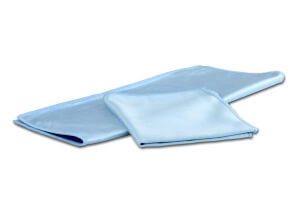How to apply Ceramic Coating
Here is a guide to applying ceramic coating for those wanting to try a DIY application. It is also a chance to get some understanding about the amount of time needed in preparation as well as application. It is a long process, requiring a lot of hours and a lot of patience, but the results are worth it, with a vehicle that shines and looks as good as new.
Professional installers of ceramic coatings have access to a broader range of brands than non-professionals, usually related to the strength of the products, some of which give off vapours that may be harmful to health. Professionals have all the equipment to deal with these hazards.
To get the best results from a ceramic coating, it is vital the surface to be coated is perfectly clean, being completely free from waxes, silicone coatings as well as dust and other pollutants. If this is not done, the coating will not be able to bond to the surface.
Coating should not be applied to freshly painted surfaces. These must be totally cured and stable before a coating can be added.
Preparation

Before you begin applying a ceramic coating to your vehicle, practice the application process so you get a feel for it. Do the same with the polishing process so that you can be sure to get the gloss finish at the level you want.
When applying a ceramic coating, make sure you are in a well ventilated and dust-free area. It is recommended that you use a protective mask and wear protective gloves during application as the liquid contains solvents.
The ideal ambient temperature for applying a ceramic coating is 25°C (+/-5°C). If the surface is too hot, the liquid will cure too rapidly making polishing very difficult.
Plan your work. Apply the coating in small sections, such as one body panel at a time and if possible work in a team where one person applies the coating, and the other is ready to polish.
Be sure to read why you should use a ceramic coating on your car and see if this is the right protection for your car.
Step by step instructions
Areas that you don’t want to coat, or which may be sensitive to solvents such as plastics, should be masked off.
Then begins the long and tedious task of pre-cleaning the car paint and the rims. You can use a standard cleaner for this, which is free of waxes or silicones, though specific pre-cleaners are also available.
The better the pre-cleaning, the better the adhesion and subsequent longevity of the coating. After general cleaning has been completed, deep clean the surface with ethanol alcohol or 70% isopropyl alcohol which will ensure all contaminants re removed from the surface. You can also use a clay bar cleaning process.
Once the vehicle is clean, you also want to remove swirl marks and micro scratches before applying the coating. Use the correct grade of polishing pads for the finish you want.
Application of coating

Use a thin and smooth micro-fibre cloth approximately 10 x 10cm in size, to apply the finish. Make sure the cloth is completely moistened with the ceramic coating and then apply the finish swiftly and evenly by wiping, always in one direction.
Polish the coating
Polish the coated surface just one or two minutes after the body panel has been coated so that you can be sure all blemishes are removed. Use a medium to smooth micro-fibre cloth and do not use excessive pressure or you will take off too much of the finish. The pressure needed is the same as that used when waxing a car. The micro-fibre cloth may feel like it is dragging slightly as the surface is buffed, but this soon disappears as you continue to polish.
If the polishing process is delayed, immediately apply another layer of the finish which will soften the layer below. Then start polishing again. Finish the buffing with a fine soft texture micro-fibre cloth which will ensure there are no swirl marks.
As a general rule it is expected that you should buff a car door for approximately 60-90 seconds with the first buffing action and then 60-90 seconds with the second buffing action. This buffing time will of course increase if the car door is very large.